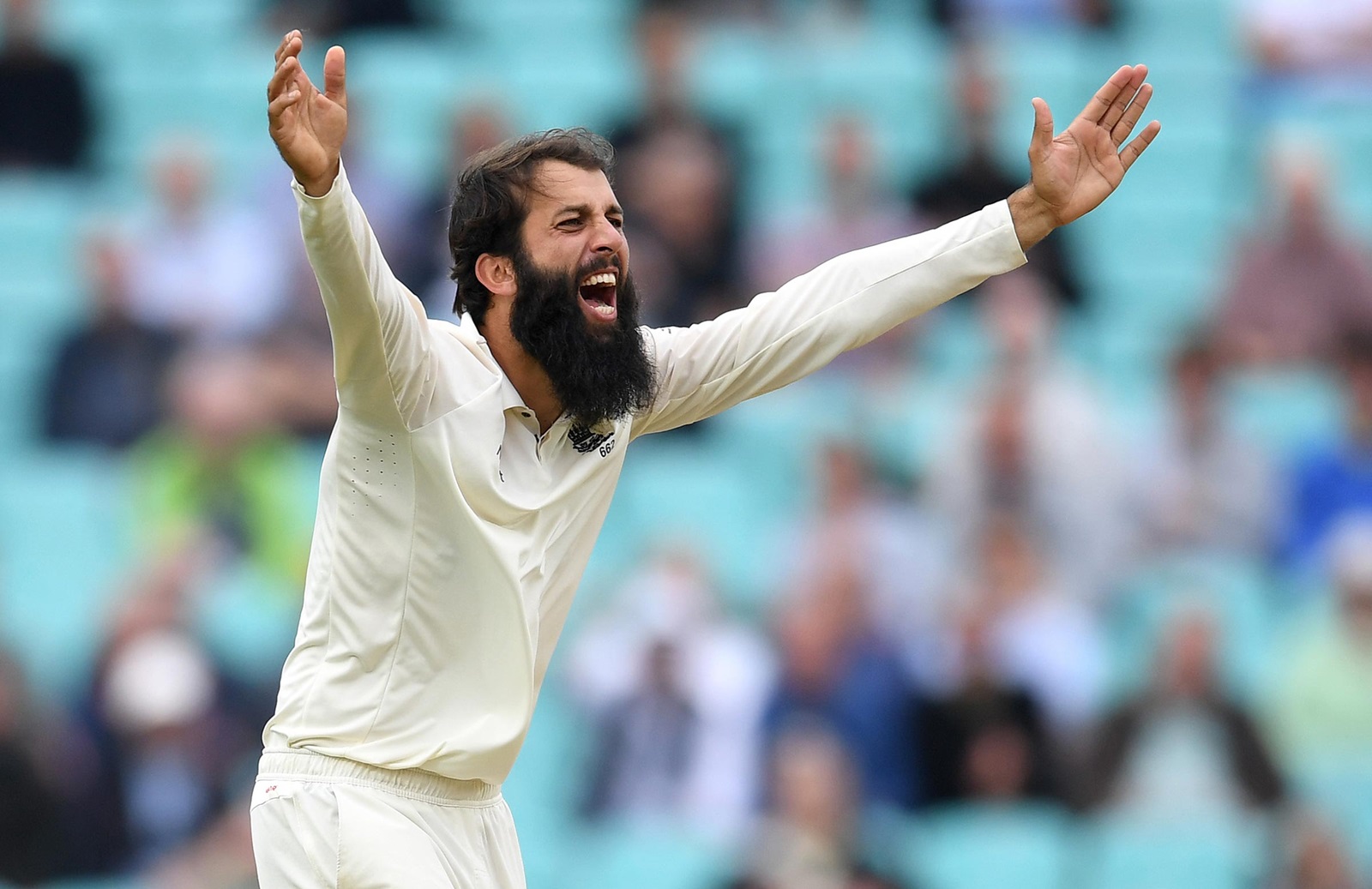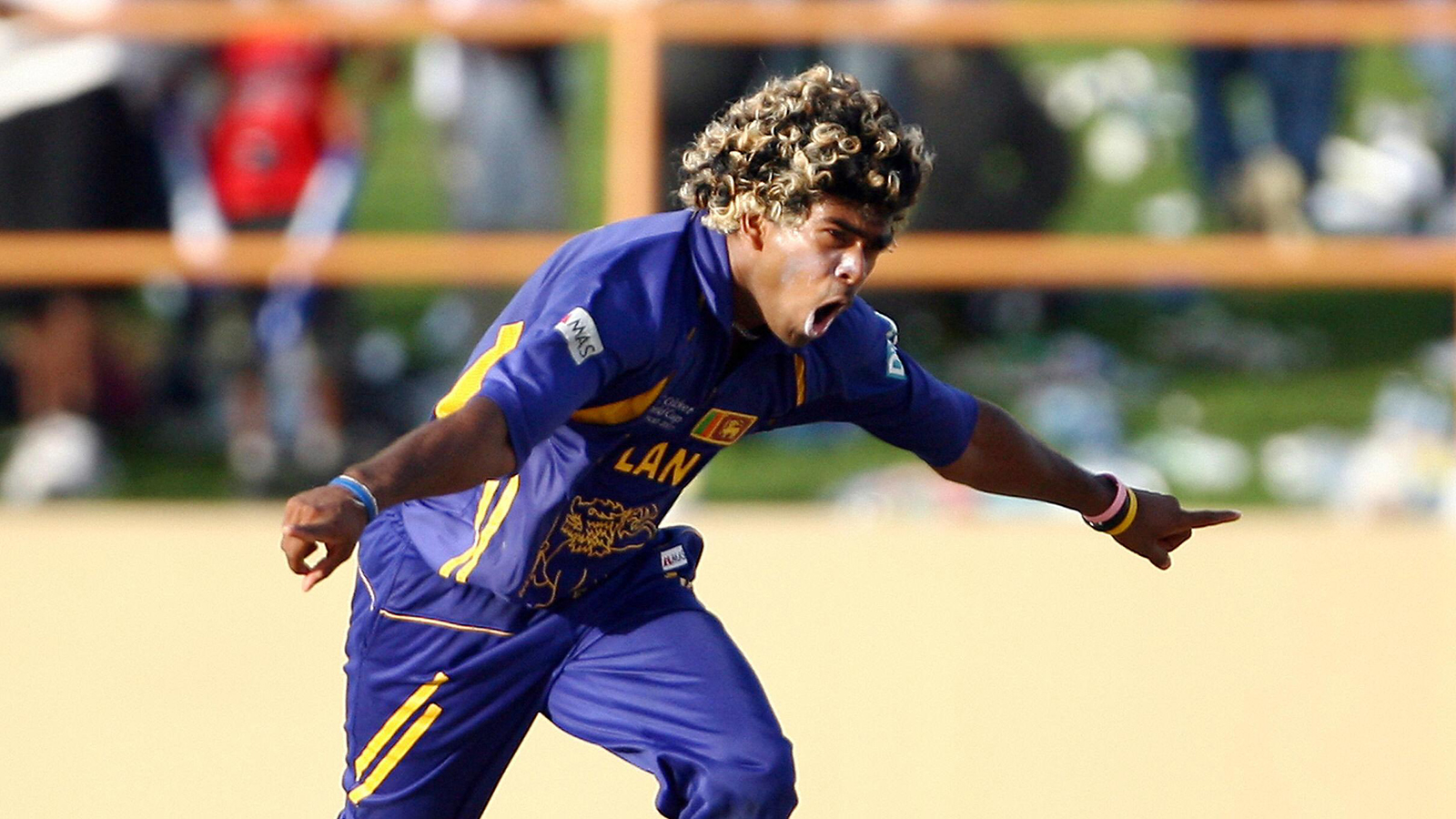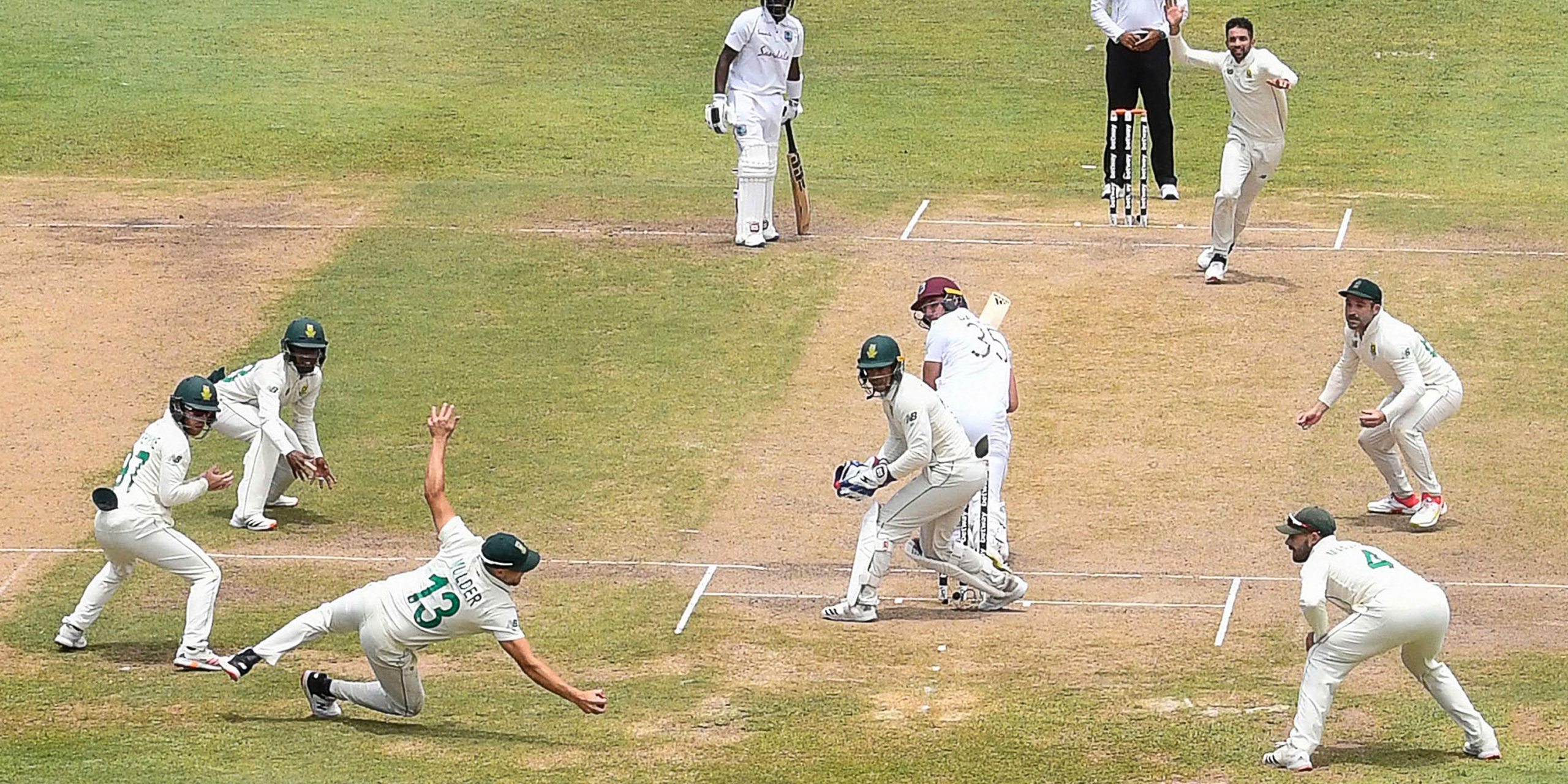There is something magnificent, isn’t there, about a hat trick? It seems to be (although in truth, on reflection, it isn’t) the ultimate bowling feat to dismiss three batsmen in three balls. If you were lucky enough to see one – perhaps Peter Siddle at Brisbane in 2010 or Moeen Ali at The Oval in 2017, or Keshav Maharaj at Gros Islet the other day, you won’t forget it. You may well be able to recount to your grandchildren how each wicket was taken.
Unless it was in a T20, or the last rites of an ODI, where it seems quite common for three batsmen in successive balls to get caught on the boundary attempting one more six – that seems pretty trivial.
In red ball cricket hat-tricks have been rare, but sufficiently possible to get the blood pumping whenever a bowler takes two in two. ‘Hat-trick ball!’ comes the cry and everybody gathers round, usually to watch as batsmen number three lets it go harmlessly outside off stump, or tap it easily to mid-wicket. An anti-climax.
But sometimes, just once in blue moon, the hat-trick happens and you will be guaranteed that however hapless is the tailender unlucky enough to be the third man out, there will be a huge roar, as though a series was just won.
Yes, I can see it all now. A dramatic end to England v South Africa at the Oval in 2017, as first, Elgar, who had scored a magnificent 137, was caught at slip by Stokes of Moeen Ali. The exact same fate met Rabada to his first ball, another left-hander.

And then, with fielders crowding him, the arm ball collides with Morkel’s pad (another left-hander), given not out but on review clearly hitting leg stump. Moeen had taken a hat-trick to win the game for England, and The Oval erupted with joy and amazement.
Maharaj’s hat-trick for South Africa v West Indies in the second test at Gros Islet was exciting although a bit strange for a left-arm spinner, as all three batsmen were caught on the leg side, granted that the first was a left-hander.
The other two fell to close catches, the second being excellent and the third, at leg slip, magnificent, providing a delicious sense of acceleration.
Spurred by Maharaj’s effort I went looking for some records. There have been only 46 hat-tricks in the entire history of Test cricket, that is in 2,426 Test matches to date; that is one in about every 53 Tests, on average.
The first was taken by the demon bowler Fred Spofforth at Melbourne in 1879. Oddly enough, four of the first seven Test hat-tricks were taken at Melbourne. There seems to be no special reason for this. It is not as though Melbourne produced atrocious pitches in the late 19th century – at least not more atrocious than those anywhere else.
In case you are wondering, there also seems to be no propensity to concede a hat-trick against any particular type of bowler. 29 have been taken by fast/ seam bowlers and 17 by spinners.
In first class games, the feat of a hat-trick twice in one match has been achieved by six bowlers, all spinners: Albert Trott, Arthur Shaw, Jimmy Matthews, Charlie Parker, Roly Jenkins, and Joginder Rao. Gloucestershire spinner Charlie Parker once hit the stumps with five successive balls, but the middle ball was, alas and unforgivably for a spinner, a no-ball.

Over the course of Test history, nobody has ever expanded the hat-trick by taking four wickets in four balls, although Lasith Malinga famously did so in the World Cup in 2007, repeating the feat in a later T20I. Four-in-four has been achieved 42 times in first class cricket, and the total number of hat-tricks is 1127.

England leg-spinner Doug Wright achieved a hat-trick on no less than seven occasions. Perhaps the most remarkable four-in-four was the one by Hampshire’s Kevan James, who achieved the feat against the Indians in 1996 – wickets that included Tendulkar and Dravid – and he proceeded to score a century in the same match. The feat was surpassed statistically by Kelly Smuts in 2015 when he took a four-in-four, 13 wickets altogether for 71, and a century, for Eastern Province v Boland.
Only four bowlers have achieved a Test hat-trick on two occasions. They are Jimmy Matthews and Harry Trumble of Australia, Wasim Akram, and Stuart Broad. Leg-spinner Matthews achieved a remarkable record in 1912 in a Test against South Africa in a triangular series in England. He is not only one of just two bowlers to achieve this twice in a series (Wasim Akram being the other – two hat-tricks in eight days against Sri Lanka in 1999); Matthews achieved his two hat-tricks in the same match, and on the same day! Oddly enough, they were the only wickets he took in that match, and even odder, the third batsman out was Tommy Ward in both innings. One wonders if Matthews bought Ward a pint afterwards. Or should Ward have bought Matthews a pint for preserving his name in history? This record of two hat-tricks in one day is not likely to be broken. Although two players at first class level (Albert Trott and Joginder Rao) have taken two hat-tricks in the same innings, so you never know. In Trott’s case the first hat-trick became a four-in-four.
It then occurred to me that we might be able to decide which was the best Test hat-trick of the 46. This is not easy to determine. Does one look at the impact of the hat-trick on the game – did it turn the game round? Or do you look at the identity of the batsmen dismissed? After all, you might dismiss de Freitas, Gough and Malcolm, as Shane Warne did at Melbourne against England in 1994, or you might dismiss Buddhika, Zoysa and Muralitharan as Mohammad Sami did for Pakistan against Sri Lanka at Lahore in 2002. Laudable enough, but hat-tricks involving more dangerous batsmen must be ranked higher.
If you dismiss Hill, Gregory and Noble, three of Australia’s finest, as Jack Hearne did for England at Leeds in 1899, or you dismiss Campbell, Lara and Adams, as Glenn McGrath did for Australia against the West Indies at Perth in 2000, then you are almost deserving of a knighthood, and your efforts are likely to swing the game – although as we shall see, not always. It is actually striking how many hat-tricks were taken in games lost by the side that inflicted them. Such are the changing fortunes of the game that Siddle’s effort at Brisbane to dismiss Cook, Prior and Broad in 2010, enabling a first innings lead of 220, were followed by England establishing the highest ever score for one down in their second innings of a drawn match, from which Australia’s spirits did not soon recover. The admirable Siddle took 6 for 54 in the first innings but 0 for 90 in the second as England piled up 517 for 1 declared. Stuart Broad remains the only Test cricketer to have been involved in three hat-tricks – two as bowler and one as batsman.
Personally, I think I would go for the quality of the batsmen dismissed, as the impact may not be decisive – although it might well be if three good batsmen are dismissed. High on the list other than the two already mentioned would be Damien Fleming dismissing Aamer Malik, Inzamam ul-Haq, and Salim Malik for Australia against Pakistan at Rawalpindi, in his first Test, in 1994.
But I think I will plump for Irfan Pathan’s dismissal of Salman Butt, Younis Khan and Mohamed Yousuf for India against Pakistan at Karachi in 2006, especially as it was achieved in the first over of the match. It did not, however, prevent India getting hammered by 341 runs. Harbajan Singh’s dismissal of Ponting, Gilchrist and Warne at Calcutta in the first innings in 2001 also ranks highly; but it was his bowling in the second innings of that great match that sealed Australia’s fate after they had posted a first innings lead of 274.
To go beyond the Test arena, Jordan Clark of Lancashire might lay claim to the most up-market hat-trick ever when, against Yorkshire in the Manchester Roses match in 2018 he dismissed Joe Root, Kane Williamson and Jonny Bairstow in three balls. Not many bowlers have claimed in three balls the wickets of batsmen totalling between them at the time more than 14,000 Test runs, and including two test captains.
Some hat-tricks are remarkable for other reasons. England wicket-keeper Alan Smith’s hat-trick for Warwickshire against Essex in 1965 came in a match for which he had been selected as wicket-keeper. Odd names to see included in the list of hat-trick takers include two big men who opened the batting for England but were strictly part-time as bowlers: John Jamieson and Marcus Trescothick.
Turning to Test matches, Naseem Shah’s for Pakistan against Bangladesh at Rawalpindi in 2020 was achieved while he was till just 17 years old. Sohag Gazi of Bangladesh remains the only player to achieve a hat-trick and score a century in the same test match, achieved against New Zealand in 2013.
England’s Maurice Allom is the only bowler to have taken four wickets in five balls including a hat-trick in a test match (against New Zealand in 1930), although Chris Old and Wasim Akram both took four in five with the third ball in the sequence failing to take a wicket. Four wickets in an over has been achieved on only six occasions in test matches.
Five-in-five has never been achieved at first-class level, although Gary Sobers took five in five for EW Swanton’s XI against Malaysia at Kuala Lumpur in 1964.
As Geoff Boycott famously put it, ‘if you want to know where you are, add two to the wickets column’, on the basis that one often brings two. But sometimes two brings three, and much faster than you might have anticipated. Yes, magnificent, I can see it all now … even though it was only Morne Morkel failing to spot an arm ball.
